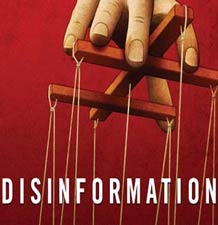IBATR: Critical Thinking Primer
These books reside on a foundation of critically thoughtful communication. This is communication that consistently incorporates the principles of critical thinking and best supports the ethical, accurate transfer of information.
It does not involve intellectual hoop-jumping or mental gymnastics that only lawyers, philosophers, or Mensa members understand. It’s a simple form of critical thinking that anyone should use to cut through the adult male bovine excreta and get to the most accurate possible version of the truth regarding any given issue or question.
IBATR (pronounced “EYE-batter”) is the acronym representing the five legs of our critically thoughtful communication table. When even one leg is broken — or missing — the table wobbles. Milk spills.
- I) Information — Carefully consider the communicated information or question at hand, ensuring you understand it clearly. Assign no immediate favoritism toward information sources and no immediate judgment about accuracy or inaccuracy of the information.
- B) Biases — Examine all biases you or the sources might have surrounding the communicated information or question at hand.
- A) Assumptions — Examine all assumptions you or the sources might have surrounding the communicated information or question at hand.
- T) Truth — Maintain a commitment to truth and honesty, and consider the level of this commitment for each communication or information source.
- R) Response — Carefully draw a conclusion and formulate a response. And always remember that this might require modification based upon new analysis, new communication, or new information-source evaluation.
IBATR is the Holy Grail of successful communication. Granted, perfection is not possible. But applying one’s best intentions is possible. Applied IBATR best intentions means that we try to follow the steps to the best of our ability. And the last one, Step “R,” always allows for the reexamination of information, sources, and personal motives.
Critically thoughtful communication and IBATR constitute the trunk of the communications tree. When this trunk is weakened, branches break or die — or get misquoted. This acronym represents the foundation of accurate, ethical information exchange. Make this acronym your best friend. Put aside time for it. When it is speaking to you, give it your full attention as if it were the most important acronym on Earth. Compliment it now and then on a new hypothesis (or hairstyle). Surprise your acronym occasionally with an intimate rendezvous at home. And never, ever, dispute your acronym when the two of you are with friends.■
Editor’s Note:
Ahh, critical thinking — it’s not just for Supreme Court justices anymore. Consult your favorite internet search engine and you’ll find many definitions. I like this hybrid: “the careful, deliberate, skilled, active interpretation and evaluation of (the veracity, bias, and fairness of) observations, communications, information, and argumentation.” (Fisher, Alec & Scriven, Michael; Critical Thinking: Its Definition and Assessment; 1997.) (Moore, Brooke Noel & Parker, Richard; Critical Thinking; 2007.)



